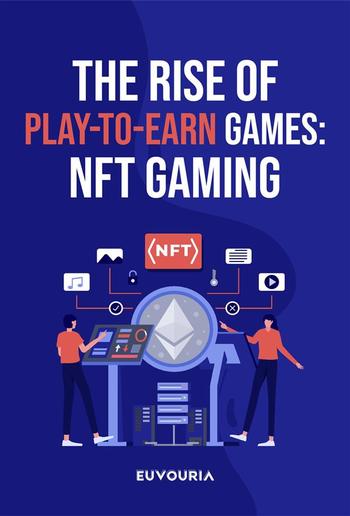
Euvouria LLC - NFT Gaming
NFT Gaming
The Play-to-Earn Model
Euvouria LLC
Description
In the last decade, cryptocurrency (crypto) has become a worldwide phenomenon, garnering the attention of those interested in technology—and that have money to spend. Although many people who aren’t keenly aware of crypto are often led to believe that it has only been around for a few years, it has been around since the mid-90s, with some people stating that the concepts for crypto stem back as far as the late 80s.Without getting too much into the history of crypto, the first iteration of crypto was something called Digicash; however, it never really took off. After many attempts (albeit with nearly all of them failing throughout the 90s) Satoshi Nakamoto developed the crypto that we all know (and love) today, Bitcoin. Part of the success of Bitcoin, and the reason that it was able to be developed was because of a technology called blockchain. Blockchain can most simply be thought of as a hyper-secure online ledger system that can store digital data. An explanation as to how blockchain works can be found in Appendix A. It is highly suggested that this explanation is reviewed before diving into further chapters of this document to ensure a full understanding of the technology and functions discussed.Nevertheless, blockchain is the technology that has laid the foundation for crypto and allowed Bitcoin to become the global phenomenon that it is today. Not only this, but the growth of blockchain technology has allowed for new cryptos to be developed, and for other decentralized blockchain apps to be explored. That is, the fundamental functions of blockchain being a secure, decentralized platform have allowed various applications to be developed using blockchain as the secure ‘building blocks’, and for crypto to be used as the financial extension of any digital, decentralized application or software.One such application of these decentralized apps (DApps) that has gained tremendous momentum in the last few years is video gaming. Traditionally, video games have been developed as standalone software, often either being played on handheld devices, consoles, or on computers via online hosting platforms. In the most basic form, this involves a large amount of coding, planning, and designing to make video games into what people know and play today.However, with more growth and increasing understanding of the various applications of blockchain technologies, there has been tremendous interest in merging blockchain with traditional video games to make DApps known as NFT Games or Crypto-Games. Definitions of “NFTs”, “NFT Games” and “Crypto Games” will be given in subsequent chapters of this document, as well as in the “Terms and Glossary” at the beginning of this document.Nevertheless, as many traditional video games have been merged with crypto and blockchain technologies, there has emerged an entirely new video game and income generation model, Play to Earn. This will be discussed in later chapters of this document. The key difference between NFT games and traditional video games is that (as the model would suggest) people can play NFT games to earn money. More specifically, they can earn cryptocurrencies while playing these games.As the core focus of this document, the following chapters will delve into what exactly NFT and Crypto games are, how they function, the technology that allows them to function, the model this has given rise to, and nearly every other aspect of these games—including popular games that are playable today. To understand all

